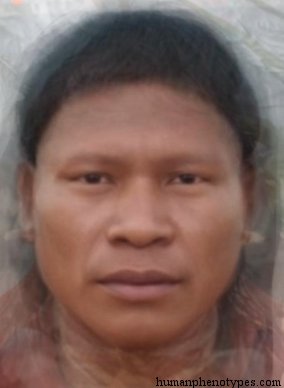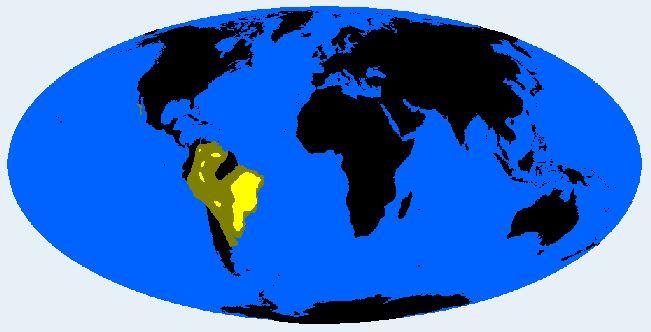Description:
Lagid proper, named after fossil remains of Brazil. Associated with one of the first migration waves to South America. Skulls sometimes Melanesiform. More widespread in prehistoric times. Still common in Jŕ speakers like Xavante, Xerente, Krah˘, Kayapo, ApinajÚ, U'wa. Also in Xingu and Ayoreo and some Amazonians (e.g. Yanomani, Ye'kuana). More mixed in Bororo, even in the extinct Peric˙.Physical Traits:
Yellowish/copperish light to medium brown skin, straight or wavy hair. (Rather) short, mesoskelic, sometimes brachyskelic, meso- to endomorph. Dolicho- mesocephalic, sometimes hyperdolichocephalic, hypsicephalic. Meso- platyrrhine, low-rooted, sometimes concave nose. Face is low and large with deep-set eyes and supraorbital ridges. Strong sexual dimorphism, mild prognathy. Cheekbones and jaw broad. Eyelids narrow, sometimes with slanted eyes.Literature:
Defined early as Lagoa Santa race by Hansen (1888). This was kept by Vogel (1974), also Eickstedt (1934), who also called it "mountain cave type". Fuegid was included before Imbelloni (1937) separated it. Lundman (1967) termed it Campid, Biasutti (1967) Lagoana. Imbelloni (1937, 1958), Kunter (1987) and Knussmann (1996) Lagid.







